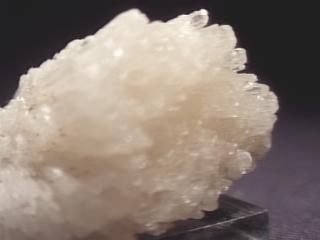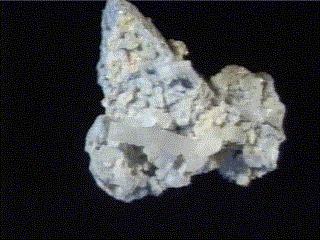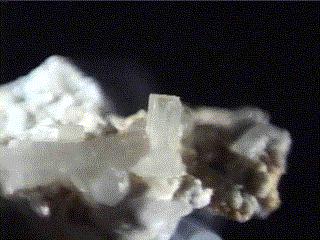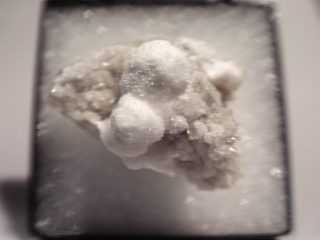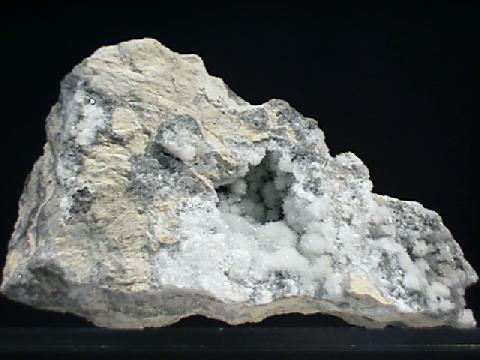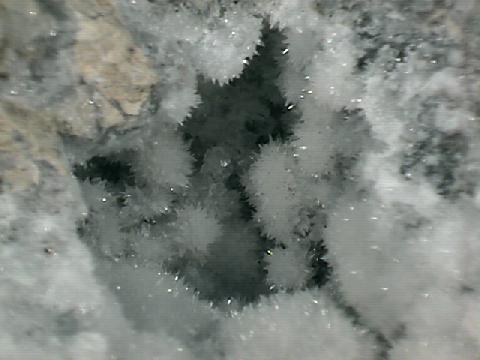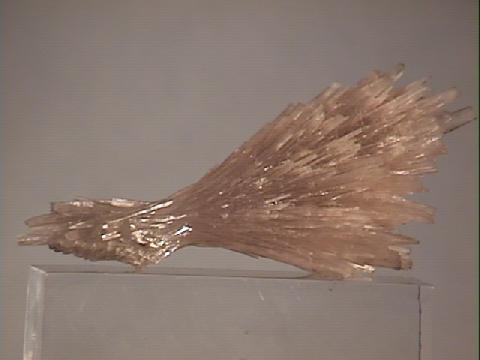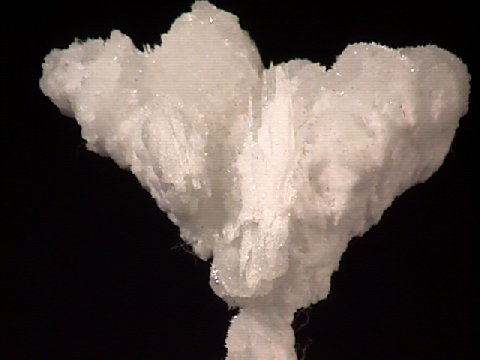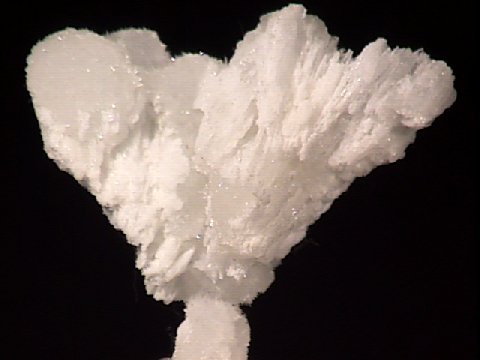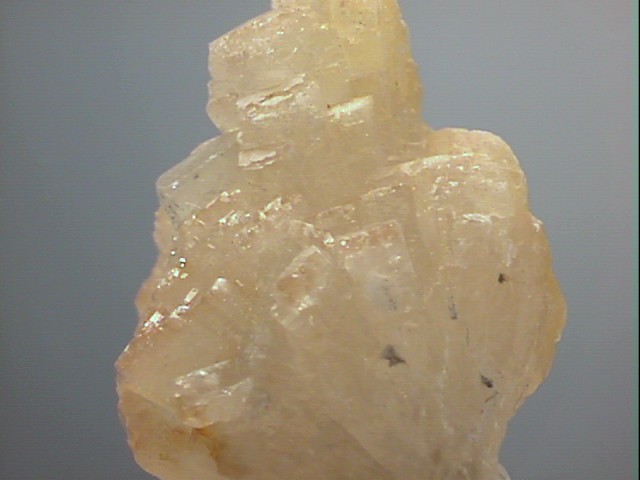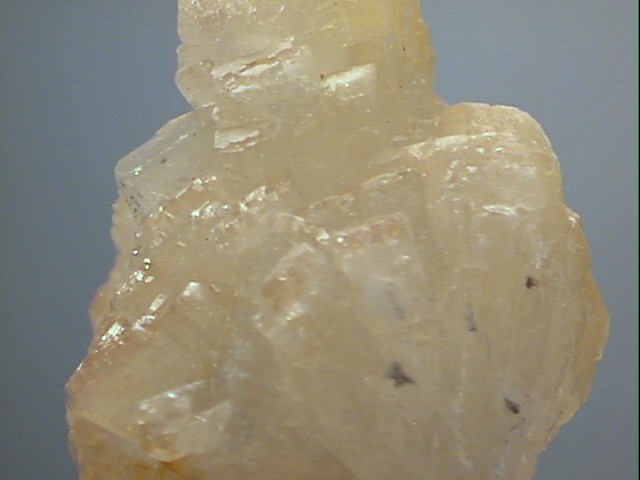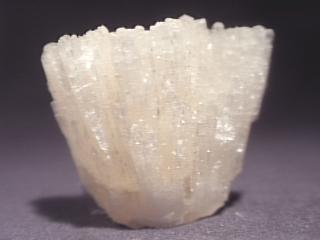
STRONTIANITE
Specimen str-3
$ 100.00
Dims: 2.0" x 1.7" x 1.1" (5.1 x 4.3 x 2.8 cm)
Wt: 2.95 oz. (83.8 g)
Clara Mine, Drensteinfurt, Wurtemburg, Germany
This thumbnail specimen consists of a tightly packed cluster of scores of long, thin orthorombic Strontianite blades. These blades reach up to 1.7" (4.3 cm) in length and less than 0.1" (3 mm) in width and depth. They are in generally good condition, though if one looks closely, several crystals on the outside of the cluster are broken and incomplete. They all have a very pale cream coloration and a vitreous luster, and are transparent and moderately clear, though many internal fractures and inclusions, along with their somewhat compact habit, diminish and spoil their clarity. There are dozens of tiny black spots on the cluster that look like bits of dirt or dust. Under 10-power magnification, however, one can see that they are actually tiny pyrite crystals that have excellent cubic form and the pale golden color and metallic luster that is standard for the mineral. There is also a visible amount of plain old dirt wedged in the narrow spaces between the crystals, about one-third to halfway down their lengths. It is an impressive specimen, and according to the documentation, was once part of the collection of Fred Pough, a well-known mineralogist, collector, and author of a field guide to rocks and minerals.
